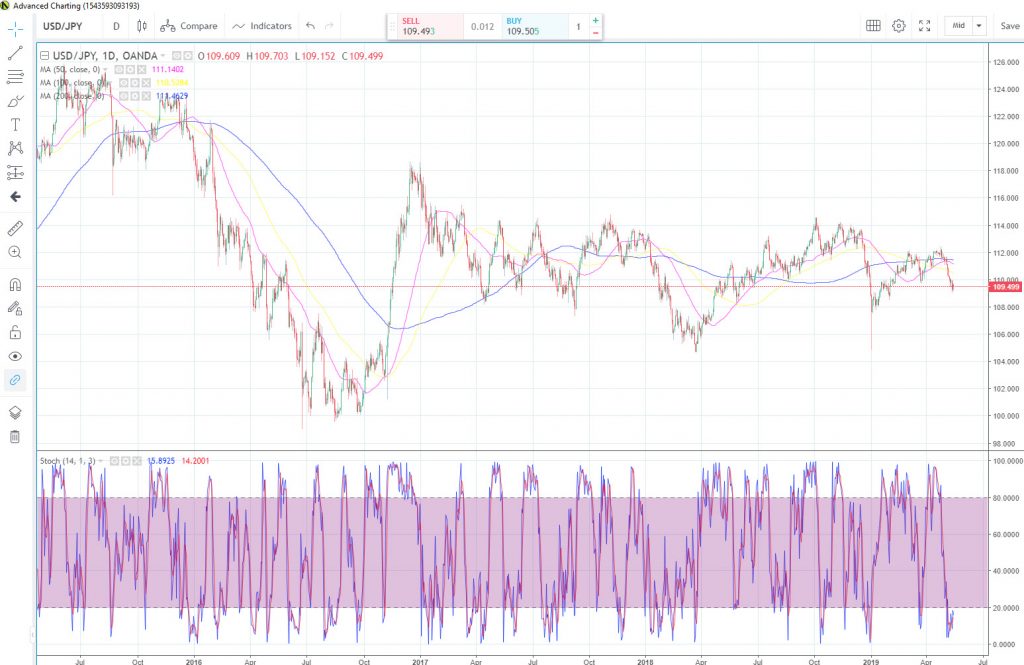Today’s main market move was driven by the Trump administration expected decision to delay auto tariffs by up to six months. The deadline for a hard decision is Saturday on whether national security concerns warrant tariffs on autos. The markets welcomed the news as stocks soared and safe-haven currencies gave up most of their earlier gains.
Despite today’s optimistic tone, the NY Fed’s favorite recession indicator is once again inverted as the gap between the three-month and 10-year yields widens. The last inversion in March only lasted a week and the one prior was in 2007. This inversion however may be more of a signal investor are applying a deflationary hedge (paying a premium to hold longer term debt) and not a pure signal for a recession. Historically the 10-year and 3-month inversion has successfully identified a recession within 12 months, with the only false positive occurring during the 1990s when Long-Term Capital collapsed triggered a systemic financial crisis.
The US dollar/Japanese yen’s correlation to Treasury yields has held up nicely over the past month. If we see the 10-year yield on Treasuries continue to drift lower, we could see the dollar-yen slide towards the post January flash crash lows of 107.50.
Content is for general information purposes only. It is not investment advice or a solution to buy or sell securities. Opinions are the authors; not necessarily that of OANDA Business Information & Services, Inc. or any of its affiliates, subsidiaries, officers or directors. If you would like to reproduce or redistribute any of the content found on MarketPulse, an award winning forex, commodities and global indices analysis and news site service produced by OANDA Business Information & Services, Inc., please access the RSS feed or contact us at info@marketpulse.com. Visit https://www.marketpulse.com/ to find out more about the beat of the global markets. © 2023 OANDA Business Information & Services Inc.



